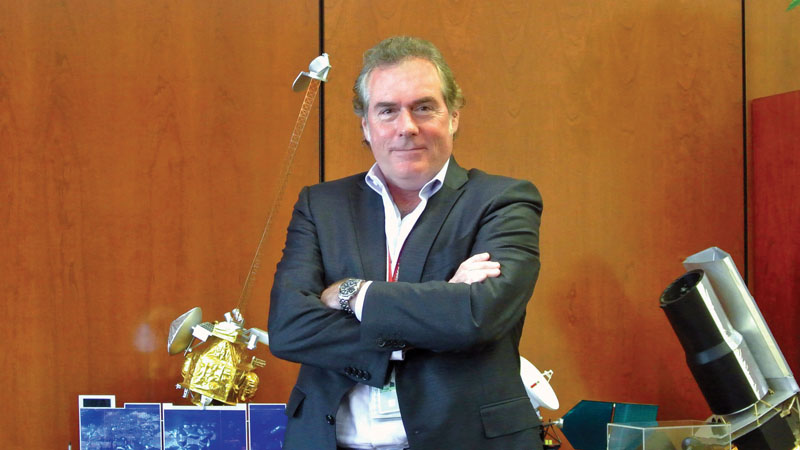Seizing an ‘incredible opportunity’
By Ben Iannotta|November 2016
Michael Watkins, director of the NASA-funded Jet Propulsion Lab
Science priorities
There’s a couple of new program types that are really starting to boom now. One of them is Europa, the outer planets and the ocean worlds of the outer solar system. That’s going to be a big part of our future in the coming decades. We want to be ready for that and have the capabilities we need to execute that successfully for NASA and for the country.
The exoplanet search is something that’s also really starting to catch the public’s eye. [The Wide Field Infrared Survey Telescope] will have a coronagraph to demo that technology. That could evolve to star shades as well, where you’re blocking the star with a separate shade. We want to make sure that we’re ready and we have the right skill and the right capabilities to do that.
Europa lander and Clipper
We would launch [the lander] after Clipper, so we would get information back from Clipper, [which] would most likely go on a direct trajectory. It’s a big advantage for the program if the [Space Launch System] rocket is available as a launch vehicle. That allows you to launch direct from the Earth and get the first flyby mission there pretty fast.
If the lander were to launch on an SLS, there’s the option to not go direct, partly because it’s heavier than the flyby. It’s got to have a carrier spacecraft and the lander and a lot of fuel and such. So it gives you more time for the Clipper data to come back and learn more about the surface.
Science goal for Europa lander
It’s mostly a chemistry mission, because we don’t really know how exactly to find life. It’s hard to say I can design an instrument that definitely finds something that we don’t know about. The Science Definition Team is off trying to say, “OK, what is the right suite of instruments?” and trying to be kind of minimalist about it because payload mass, landed mass, is going to be a problem. And also, how do you actually get some ice and analyze it?
Congressional Europa directive
I think everyone’s now coming to agreement that a separation of a couple of years [between the launch of the flyby probe and the lander] is optimal.
Science advice from Rep. John Culberson, R-Texas
It is helpful to have that much intellectual support in Congress, because he’s pushing to make things happen faster. He’s pushing to make them better, and I think that’s a good thing. And he’s a big advocate for the agency across the board, not just Europa. It’s always good to have strong advocates in Congress.
Earth’s climate
You have to monitor in order to understand the system and understand the physics well enough to ever have a prayer to predict with quantitative accuracy. We’re in the learning phase, trying to say, “Are we really measuring enough of the physics that we really understand this problem and exactly why this El Niño happened? Or this amount of sea level rise happened? This amount of glacial mass-loss in Antarctica or Greenland? What is that telling us about the physics and underlying processes that we need to know better?”
Approach to Earth vs. planetary science
I don’t think it’s all that different. A lot of the most important scientific papers about what’s on Mars or what’s in Europa actually come from our university colleagues that actually are part of the science team or they propose to be on the science team … . The project scientist on Europa is also primarily trying to ensure that the right data is acquired and it meets the scientific requirements that the decadal survey and NASA have established for that mission. They’re trying to be the scientific conscience of the project to make sure that instruments aren’t descoped or the data is not descoped or something inaccurate.
View of climate change
I think there’s a component of it that is natural, and there appears to be a component of it that is anthropogenic. Exactly how big those are relative to each other and what the acceleration, what the rate of growth of those are, I think is still a research topic. We still need more data and longer spans of data to really answer that with the kind of precision that we need … . [This is] in line with [the Intergovernmental Panel on Climate Change] in the sense that IPCC is trying to understand what’s going on and trying to forecast what’s going to happen, right? And there’s a range in those forecasts depending on what exactly you model for the physics and what your climate model says and how you initialize it. And so, it’s a matter of increasing accuracy in those numbers. ★








